2023 Toyota Prius First Drive Review: It doesn't suck!

DEL MAR, Calif. – In the beginning, the Toyota Prius was a science experiment. Then it became a phenomenon. Then it matured to be less weird and then, most recently, it got eye-searingly ugly by even Prius standards. Consequently or not, buyers fled en masse. Throughout those four generations, though, certain elements remained consistent: they were incredibly fuel efficient, they were love-it-or-hate-it unconventional and they were mind-numbingly uninvolving to drive. For the fifth-generation, 2023 Toyota Prius, only one of those things remains true, and it’s inarguably the one that matters most. It gets as high as 57 miles per gallon combined with different trim levels and drivetrains dipping only as low as 49 mpg. That’s roughly a 5-mpg improvement over before and puts the Prius back on top of the hybrid fuel-efficiency podium.
Yet simply getting incredible fuel economy isn’t enough anymore in the face of plug-in hybrids and full EVs. That’s what makes the new Prius’ radical transformation so significant. And honestly, do we really need to delve deeply into how much of a visual transformation the 2023 Toyota Prius represents? Despite being underpinned by a strengthened and lightened version of the same TNGA-C platform, the Prius has gone from one of the most awkward and ugly cars on the road to something that is well-proportioned, distinctive and genuinely aesthetically pleasing. This futuristic wedge was legitimately turning heads during our drive, and not because they were seeking a sick bag. The new Prius is actually cool, and unlike that second-generation phenomenon, it’s not only because of the mpg readout in the instrument panel.
Which leads us to another key element: the new 2023 Prius is less likely to put people off by being bizarre. For example, the instrument panel that has always resided atop the middle of the dash has migrated to where it always should’ve been: directly in front of the driver. Sure, the digital panel is above the steering wheel rim and, as such, may be blocked a bit if you’re shorter, but it’s also closer to the driver’s natural line of sight. The shifter is also now placed on the center console instead of sprouting like a mushroom out of the dash, although it maintains the same left-up for Reverse, left-down for Drive movement that’s been a staple since the second-gen Prius. The shifter hardware itself is basically the same design as what you’d find in a Lexus NX or RX.
The overall design is also more conventional, which isn’t to say dull. Far from it. It’s modern, visually appealing and, well, just look at the before and after below.
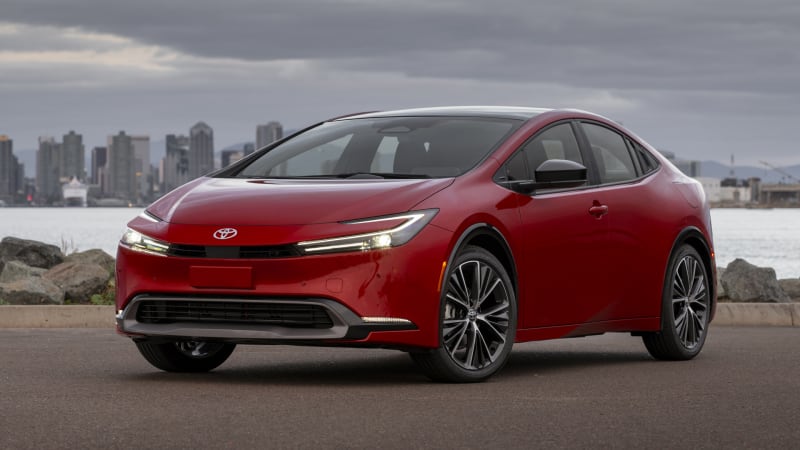
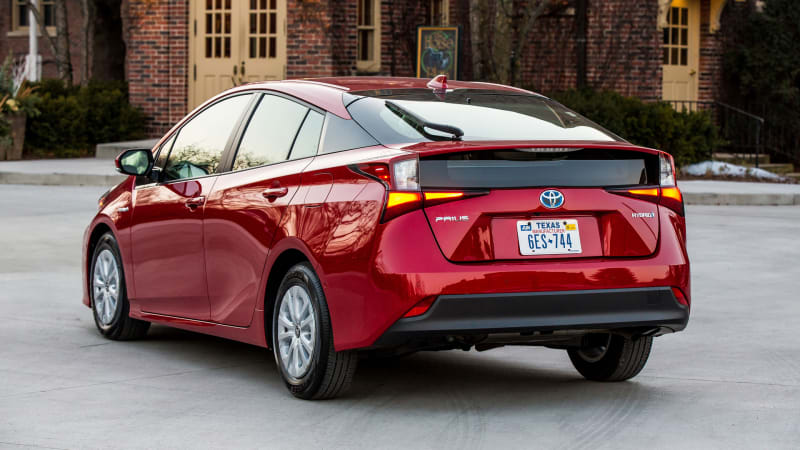
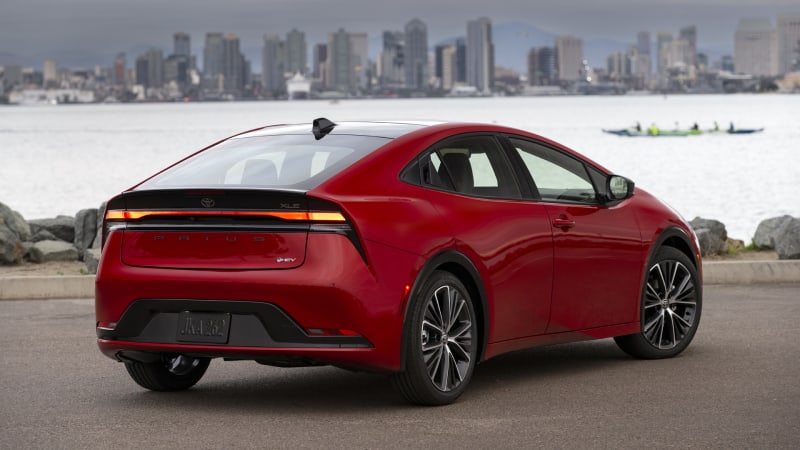
The standard touchscreen remains 8 inches, but the upgrade is 12.3 inches with the same widescreen orientation and interface as various other recently introduced Toyota and Lexus vehicles. It’s also slightly canted toward the driver, as opposed to its portrait-oriented predecessor that sure looked like it was pointing at the passenger. The interface could still use a permanently docked icon (or physical button) to escape from Apple CarPlay/Android Auto, and the overly complicated radio interface is a step backward, but overall, this is a sufficiently modern, quick-reacting system.
Down below, the center console is higher with more thoughtfully considered storage solutions. It also doesn’t look like a toilet as the old one did when painted white. Importantly, the quality of materials has improved, including the dash pad, door tops and SofTex simulated leather that no longer looks and feels so obviously simulated.
The seats it covers are both more supportive and interesting to look at, with a 1-inch-lower hip point that makes them feel like you’re sitting in the Prius rather than on top of it. A big part of the seat lowering, however, is because the new Prius’ roof height is 2 inches lower than before. That decrease is mostly over the front occupants, which should be obvious in the side-by-side photos below.
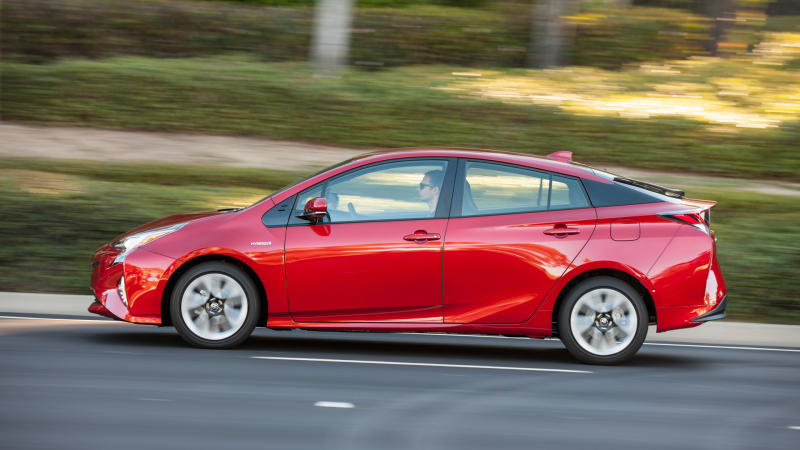
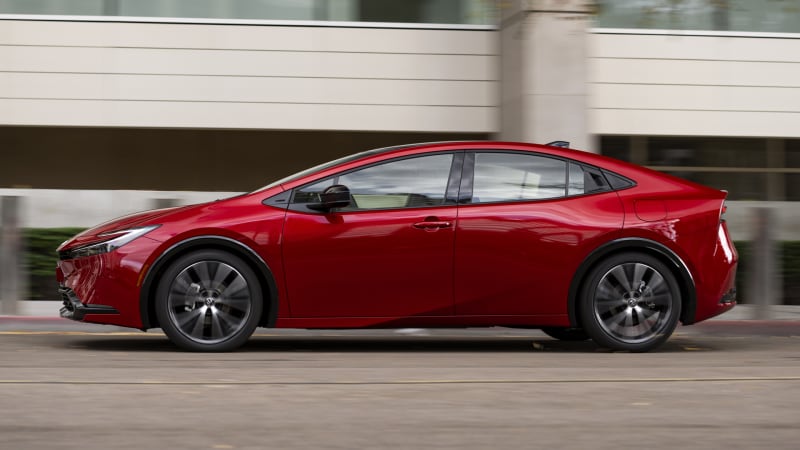
Sadly, you’re less likely to wear a jaunty hat while driving in the new Prius. You’re equally as unlikely to wear one in the back seat. Headroom seemed to be just as tight in both, although at 6-foot-3, I’m a tough test. The newly available fixed glass roof and its sunshade housings do lower the roof forward of rear occupants’ heads, though, making it feel a bit claustrophobic even if their noggins technically fit. And while we’re in the vicinity of visibility, that ultra-raked windshield results in more dashtop reflections than normal, and there’s a chance that those who sit closer to the wheel may feel uncomfortably close to the windshield header.
Once you’re comfortably seated below that header and push the perfectly normal start button, the new Prius displays what is perhaps its most surprising development. The hybrid powertrain is massively more powerful and refined with impressive drivability improvements beyond not just the old Prius, but other Toyota hybrids as well. Engine displacement jumps from 1.8 to 2.0 liters with output following suit from 96 horsepower to 150. The powertrain’s new electric motor, featuring a newly developed magnet and electromagnetic steel plate, produces 111 hp up from 71. The result is a total output of 194 hp, up from a measly 121, which translates into the 0-60-mph time plummeting from a sluggish 9.8 seconds to 7.2. It goes down even further to an even 7.0 with the returning all-wheel-drive system that is once again the result of adding an extra motor to power the rear wheels (output goes up to 196 hp).
This is a huge difference that anyone can notice and appreciate, but so too is the new powertrain’s power delivery. The lighter and more powerful lithium-ion battery now sends more juice to the motor when starting off, allowing for a longer stint of electric-dominant acceleration before the engine kicks on. That engagement is now smoother, and chief engineer Satoki Oya said he prioritized making sure the transition between electric motor and engine outputs was smoother for a less interrupted acceleration curve. It was immediately obvious upon driving the new and previous Priuses back-to-back that he succeeded. The old model’s engine comes on almost immediately with a rather clunky engagement and an unflattering growl. The new one indeed runs on electricity longer before the engine comes on in a more seamless way accompanied by a more pleasing, mechanical note that sounds like an actual engine rather than an old blender.
Should you need to turn the vehicle, you’re in for another pleasant surprise: the new Prius’ steering provides far more effort and feedback. Now, it still has some on-center numbness and play that you have to get through, which is probably a nod to Prius loyalists who have certain loosey-goosey expectations. Engage the Sport mode, though (yes, a Prius now has a Sport mode), and that on-center numbness disappears, resulting in more consistent weighting and precision. The old Prius had only one steering mode, and it was Suck. Utterly inert, loose, numb, imprecise, questionably connected to the wheels … most negative steering adjectives applied. Does it now contribute to a driving experience that can be deemed fun? No, but there’s a responsiveness, composure and communication present that at least brings the Prius up to the level of “acceptable.”
Opting for all-wheel drive has the potential to improve it even more. The rear motor will now kick in when the car detects more exuberant cornering in addition to when accelerating in a straight line and when front-wheel slippage is detected. This provides a more neutral power delivery when cornering, but don’t expect Quattro here. We unfortunately didn’t get the opportunity to really hustle the Prius around the sort of winding road where this newfound capability might present itself. It was mostly just mundane driving in the congested rolling hills of suburban San Diego, but it should at least tell you something that we even wanted to drive the Prius vigorously at all.
Despite this newfound driver involvement, however, the Prius has a new trick up its sleeve to combat the, ah, let’s say nonchalant driving tendencies of certain Prius drivers. The new Proactive Driving Assist automatically slows the car down when coming up to a slower car ahead or when approaching a turn. It feels like having adaptive cruise control engaged, and although the description of it sounds a bit HAL 9000, it worked in a surprisingly natural manner. I only noticed it when approaching other cars, however, and perhaps some of that more vigorous mountain driving would reveal some annoyances. I also didn’t get a chance to test the system’s automatic evasive steering capability that will drive around road-side cyclists or pedestrians. Either way, you can shut the system off, but it will turn back on by default. The rest of Toyota’s Safety Sense suite of driver assistance systems is standard.
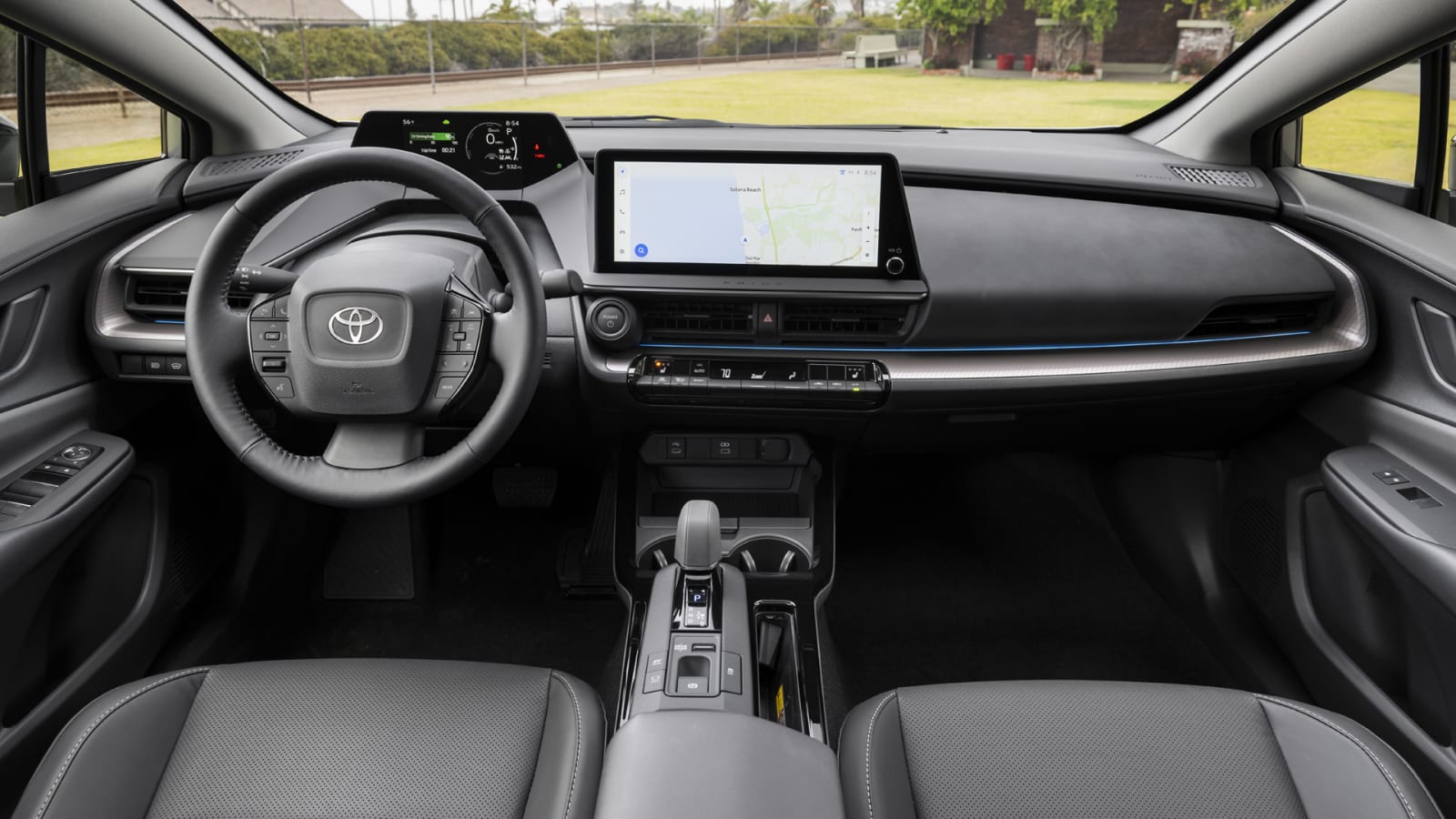
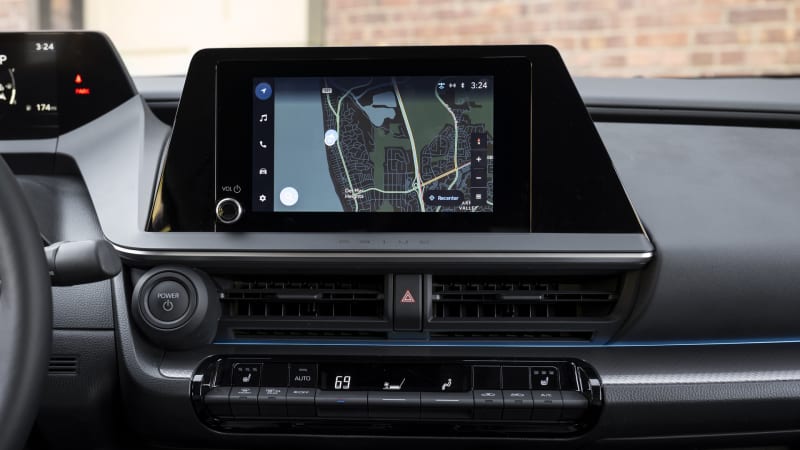
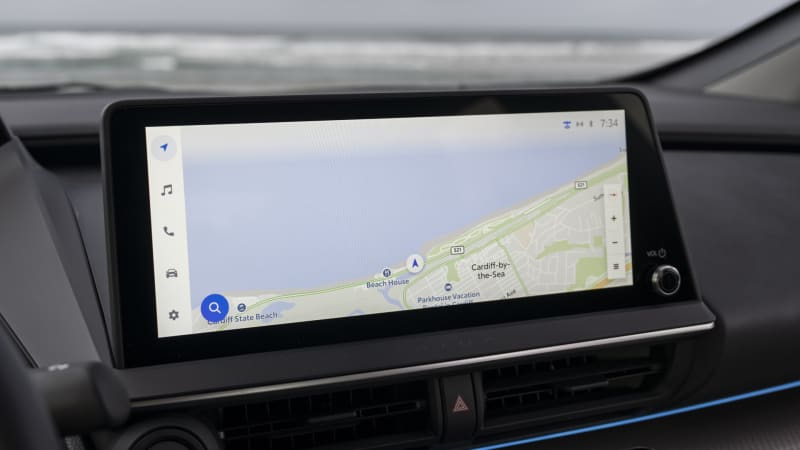
Pricing starts at $28,545, including the $1,095 destination charge, for the base LE. All-wheel drive is available on every trim for an extra $1,500. The XLE trim starts at $31,990 with the 12.3-inch touchscreen ($610) and fixed glass roof with sunshades ($1,000) separate options. Those are included on the range-topping Limited that goes for $35,560. This pricing is about the same as a Kia Niro, which is more spacious and versatile with better tech, but the Prius has sizable performance and fuel economy advantages. It ironically also offers all-wheel drive unlike the small Kia crossover. There’s also the matter of the Chevrolet Bolt EV, which is priced similarly (before tax credits make it much cheaper) and doesn’t burn any gasoline at all.
Which brings us back to EVs eating the Prius’ lunch. The outgoing generation didn’t just hemorrhage sales because it looked like a hemorrhage. Even with the Prius Prime plug-in hybrid, which will make its own return in a few months, losing traditional hybrid buyers to EVs made giving buyers something else to latch onto more important. Specifically, as Toyota’s VP of marketing Debbie Matarazzo described it, it’s “younger shoppers looking to buy one as much for its looks as for its efficiency.” Having a more conventional driving experience and interior layout certainly won’t hurt, either. It’s hard to see this new Prius achieving the sales success and cultural relevance of its predecessors, but it’s at the very least a successful reboot of a franchise in need of one.



